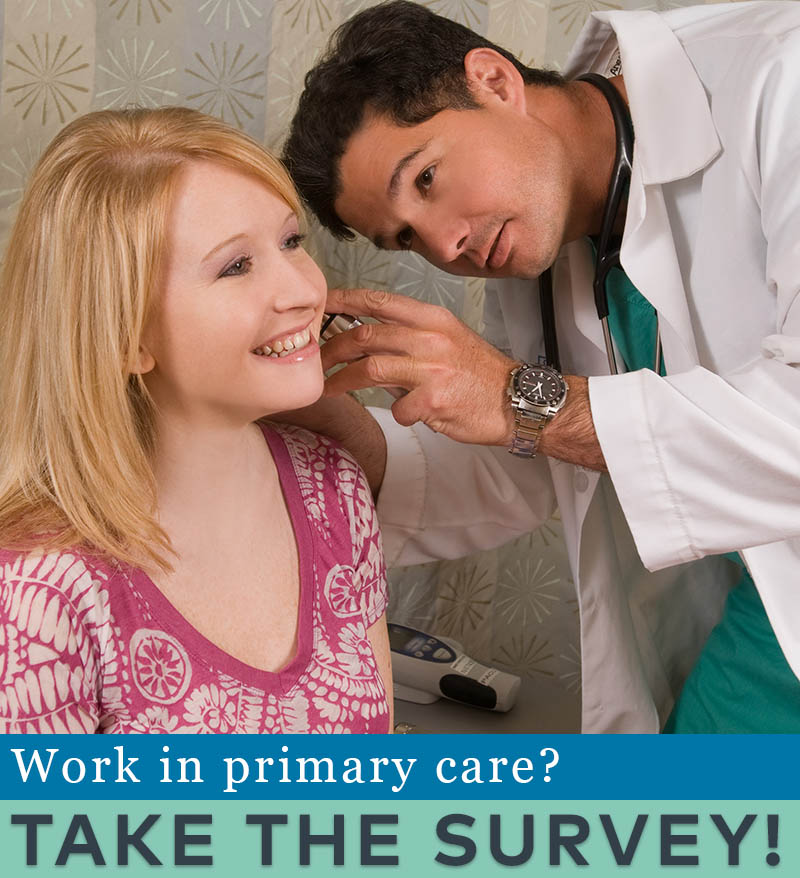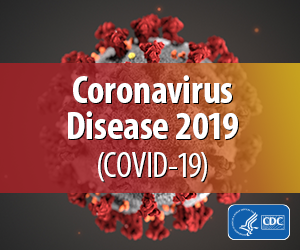You are looking at an archived version of our site. Please visit thepcc.org for a fresh, new experience!
You are here: Array » Primary Care & COV ...
Primary Care & COVID-19: Round 28 Survey
Check back regularly for the latest survey results and updates.
For data from the previous survey, see Round 27 Results.
The Primary Care Collaborative is partnering with the Larry A. Green Center to regularly survey primary care clinicians and patients to better understand the impact of COVID-19 in real time.
Who replied to the survey in round 28?
Over 650 primary care clinicians responded to the latest survey (Round 28). Responses came from 48 states, the District of Columbia and Guam. The highest number of responses came from Washington state, Texas and Virginia (combined, over 35% of the total). Physicians (MDs and DOs) represent three-quarters of responses; nurse practitioners, 15%; and PAs, 3%; with 1% PhD, 1% PharmD, and 6% marking “other.” That majority of respondents (73%) specializes in family medicine, followed by internal medicine (12%), pediatrics (6%), geriatrics (3%) mental/behavioral health (1%), pharmacy (<1%), and other (5%). Over a fifth (22%) of respondents describe their practice as “rural,” and 11% work at a federally qualified health center (FQHC) or FQHC lookalike. 15% work in an academic or residency practice; another 6% work in a convenience care setting such as retail clinic or urgent care; and 5% practice in a direct primary care or membership-based setting. The size of respondents’ practices varies: 1-3 clinicians (29%); 4-9 clinicians (30%); and 10+ clinicians (41%).
Round 28 of the clinician survey ran April 9-13, 2021. Total responses: 657.
Results at a glance
- Primary care practices are increasingly administering COVID-19 vaccines and partnering with public health. 38% of respondents say their practice is administering COVID-19 vaccines, a marked increase from previous weeks. And many report partnering with public health (42%) or their local health system (34%). 46% say they have partnered with local organizations or government to prioritize people for vaccination.
- Still, challenges remain from supplies to scheduling. Less than a fifth (19%) of surveyed clinicians report their practice has received adequate amounts of vaccines for their patients. Others note the challenge of information exchange and patient outreach, with 23% saying “I have no idea if my patients are vaccinated or not.” Over 42% say that it seems like “it takes an advanced degree in technology for patients to schedule vaccinations.”
- Primary care is still keeping the beat—and then some. Now over a year into the pandemic, primary care practices are conducting chronic-care follow-up (91%), screening patients for depression or anxiety (92%) and conducting routine cancer screenings (79%). And many are establishing new partnerships with entities such as community organizations (28%), behavioral health services (27%) and local pharmacies (19%).
- Yet COVID-19 is continues to take its toll on patients and clinicians alike. Nearly 40% of survey respondents report seeing COVID-19 cases increase in their community over the last four weeks. And 29% say they have clinicians/staff out due to illness or quarantine. A staggering 38% say they field weekly calls from individuals experiencing a mental health crisis.
- Far fewer primary practices are struggling financially. 7% of surveyed clinicians say their practice is unable to pay the bills on time; whereas, 30% say they received “adequate financial support from the government”. Fewer than 5% report that loans taken out during COVID are coming due and they don’t know how to pay them.
- The same, but different? Clinicians feelings are mixed on how things compare to a year ago. Just under 40% of clinicians feel the level of COVID-19-related strain on their practice is the same as May 2020. But that group is split as to how the situation feels: A little more than half say they’ve adjusted to it, while a little under half say it feels worse this time around. Over a third (37%) of all surveyed clinicians say the strain is getter better compared to a year ago. Only 5% say “It seems worse, and we are really struggling.”
Learn more: Download the Round 28 Clinician Survey Executive Summary (includes select open-ended answers to survey questions)
| Attachment | Size |
|---|---|
| 769.08 KB |

Are you a physician, nurse practitioner, or PA working in primary care?
Help PCC and the Larry A. Green Center track how your practice is responding to the COVID-19 outbreak by completing the Green Center's occasional survey.
The regular surveys are no longer being conducted.
COVID-19 Updates
May 9, 2022 | Primary Care Collaborative
April 19, 2022 | Primary Care Collaborative
April 19, 2022 | Primary Care Collaborative
March 7, 2022 | STAT
February 27, 2022
- 1 of 39
- next ›

Recent News
August 16, 2024
August 12, 2024
July 16, 2024
May webinar highlights: “The Commercial Market: Alternative Payment Models for Primary Care” Nate Murray explains w… https://t.co/KX9Wi2w6oY —
2 years 5 months ago
@CMSinnovates’ primary care strategy is rooted in a 2021 @theNASEM’s report which called #primarycare “foundational… https://t.co/glbPxvCysg —
2 years 5 months ago
@CMSinnovates has a new #primarycare strategy, envisioning “ACO-based primary care model tests that may focus on pr… https://t.co/aJGF1z411l —
2 years 5 months ago
- Page 1
- ››
Secondary menu
Copyright © 2024 Primary Care Collaborative




